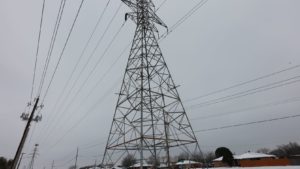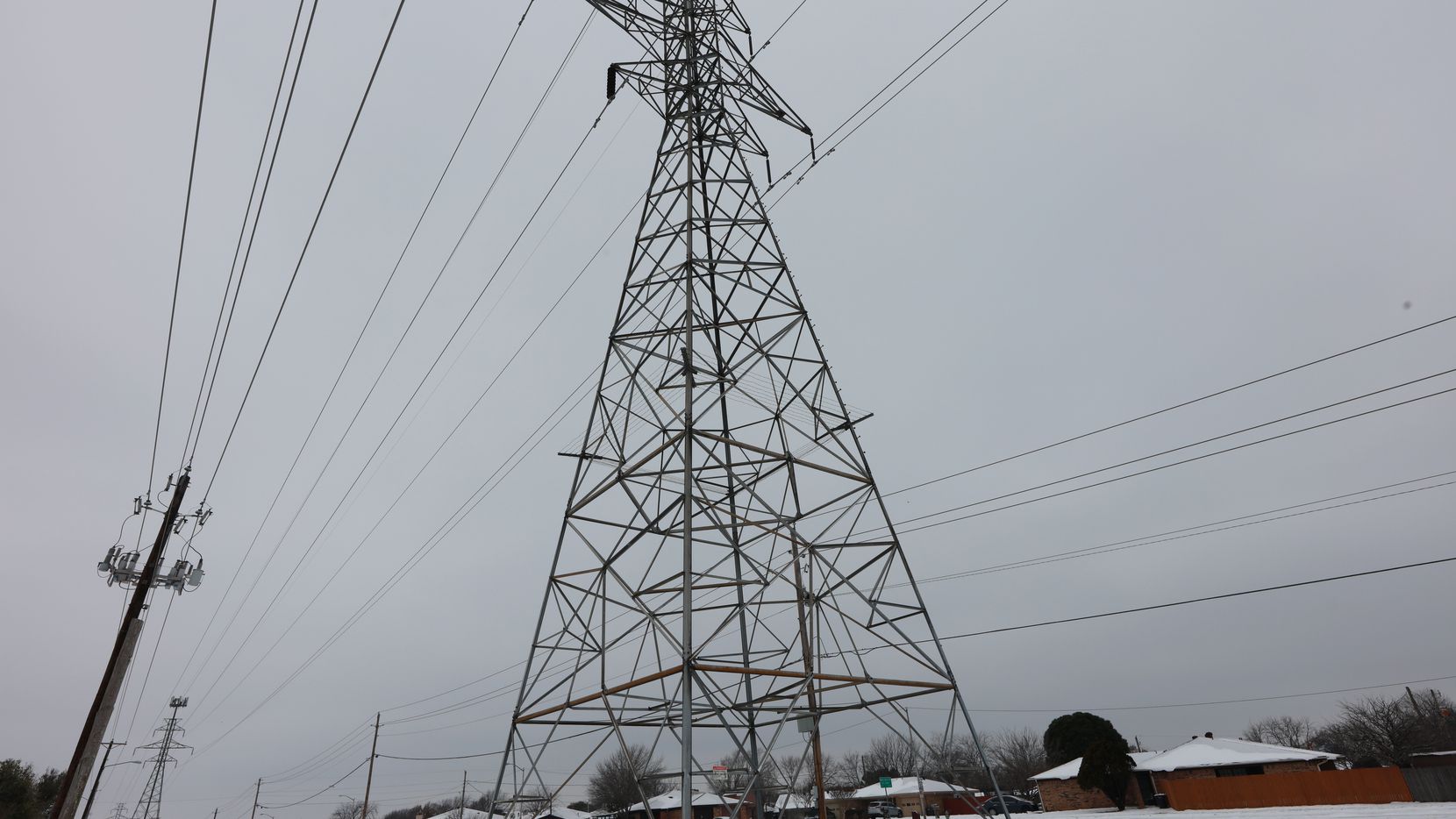 February’s epic power failure hurt the state’s reputation and raised questions about its infrastructure. The Legislature must find a fix and keep the cheap energy coming.
February’s epic power failure hurt the state’s reputation and raised questions about its infrastructure. The Legislature must find a fix and keep the cheap energy coming.
For years, people and companies have flocked to Texas for economic reasons, from fast job growth to no state income taxes.
Don’t overlook another strength of Texas’ pro-business climate: abundant, cheap energy.
That’s fueled the so-called Texas miracle, ensuring that essential services could keep up with the population growth.
But Texas will have to rewrite the narrative after a brutal winter storm left over 4 million residents freezing in the dark. Nearly 5 million more in Mexico lost power, often due to problems with natural gas supply.
The power outages led to dozens of deaths, billions in damages and questions about grid reliability and Texas’ deregulated electric market.
But prospective newcomers are still touring sites, apparently undeterred by recent events.
“We haven’t had a client say anything negative so far,” said King White, CEO and founder of Site Selection Group in Dallas.
His firm was working with a food production company that plans to invest $100 million and hire 500 for a new facility. He said officials were walking through local locations this week, doing their due diligence.
“They’re coming from out of state and they are not slowing down all the tours,” White said.
Mike Rosa, who leads economic development for the Dallas Regional Chamber, also said the blackouts were not mentioned by prospects this week.
“We have not been pressed on this and we have not been asked to explain,” Rosa said.
That will change, and soon. The Texas power blackouts were among the worst in U.S. history, affecting up to 10 million and continuing for days. Nearly half the population had to boil their drinking water, and many had to deal with broken pipes and flooding.
Other large blackouts weren’t caused by freezing weather and didn’t have the same cascading effects, including shortages in natural gas, carbon monoxide poisonings and spiking prices for business and consumers.
“There are a couple of ways this one is really different,” said Mike Jacobs, senior energy analyst for the Union of Concerned Scientists.
Jacobs has compiled a list of the largest blackouts in the world’s history, and Texas ranks just below the top. In August 2003, about 50 million in eight states and Canada lost power after inadequate tree trimming led to short circuits, followed by other failures.
In 1965, about 30 million in the Northeast and Canada lost power for up to 13 hours because of a mistaken setting on a protective device near Niagara Falls.
Texas is next on Jacobs’ list with almost 10 million losing power and millions having to contend with related problems.
Analysts at the International Energy Agency said Texas’ blackout was 500 times worse than last August’s rolling outages in California.
In Texas, much of the blame has focused on how the electric market operates. After a 2011 winter storm led to outages, regulators urged Texas generators to weatherize operations. But that was a recommendation, not a mandate, and it clearly wasn’t enough.
Lawmakers are investigating and discussing new regulations, and the results of those efforts will be crucial to Texas’ image.
“I’ve got to be able to stand before a group of consultants or any company and tell them what happened and what we’re doing to fix it,” Rosa said. “So this issue doesn’t linger in their risk category.”
Infrastructure has been one of the region’s real strengths, he said. Major investments were made in highways, airports, railways, telecommunications, utilities and more.
“Particularly in D-FW, they’ve been a very, very strong selling point for us for many years,” Rosa said.
The Texas grid generally has been reliable, according to data from the U.S. Energy Information Administration. In 2018, the average downtime for power interruptions in the U.S. was 349 minutes per customer, nearly six hours.
In Texas, the downtime was half that size — an average of 170.4 minutes per customer in 2018, a spokesman for the agency said. South Dakota was lowest with an average of 93 minutes while North Carolina was down for an average of nearly 30 hours.
On another measure, reducing short-term gaps in generation that can undermine the grid, “Texas has really outperformed the rest of the country,” Jacobs said.
He credits industrial customers that became part of the solution by agreeing to quickly shut some operations when necessary.
Industrial users helped push for electric deregulation in the late 1990s, and the competitive approach has paid off. From 2001 to 2019, net electric generation grew 30% in Texas, over three times faster than growth for the rest of the U.S.
Texas’ industrial rates were initially higher than the U.S. average. But they’ve been lower for over a decade, and last year, the U.S. average industrial rate was nearly 29% higher, according to government data.
“An affordable, reliable power supply is one of the top three things that a prospective manufacturing plant looks for,” said Tony Bennett, CEO of the Texas Association of Manufacturers, which represents more than 600 companies.
It’s as important as a skilled labor force and tax policy, he said, and the power interruption in Texas has done real damage.
“No doubt it’s a reputation hit for our state, particularly with advanced manufacturing,” Bennett said.
He’ll urge lawmakers to do what’s needed to stabilize the grid without layering on costs or undermining the competitive market.
“It’s been a boon for our economy, and we don’t think this [blackout] is the end of it,” Bennett said.
In the past decade, Texas has tackled major infrastructure problems and committed serious resources, said Dale Craymer, president of the Texas Taxpayers and Research Association and a former state budget director.
In 2013, amid concerns about a water shortage, the Legislature proposed moving $2 billion from the Rainy Day Fund and voters approved an amendment. Two years later, lawmakers used a similar approach to address transportation and voters approved that measure, too. Billions from sales taxes or motor vehicle taxes will go to roads and related debt in what was called “the largest single increase in transportation funding in Texas history.”
“We’ve already dealt with two big infrastructure challenges over the last decade — water and transportation — and we’re on our way to alleviating those,” Craymer said. “Ultimately, we’ve shown that we can fix complicated problems, and I don’t think the grid is going to be any different.”

